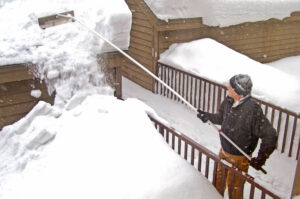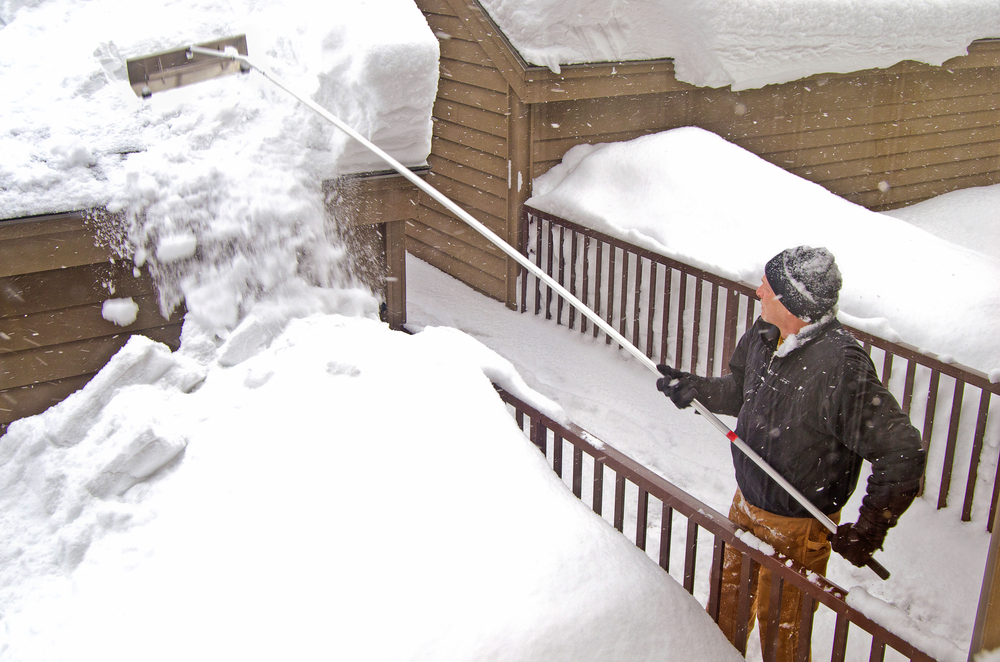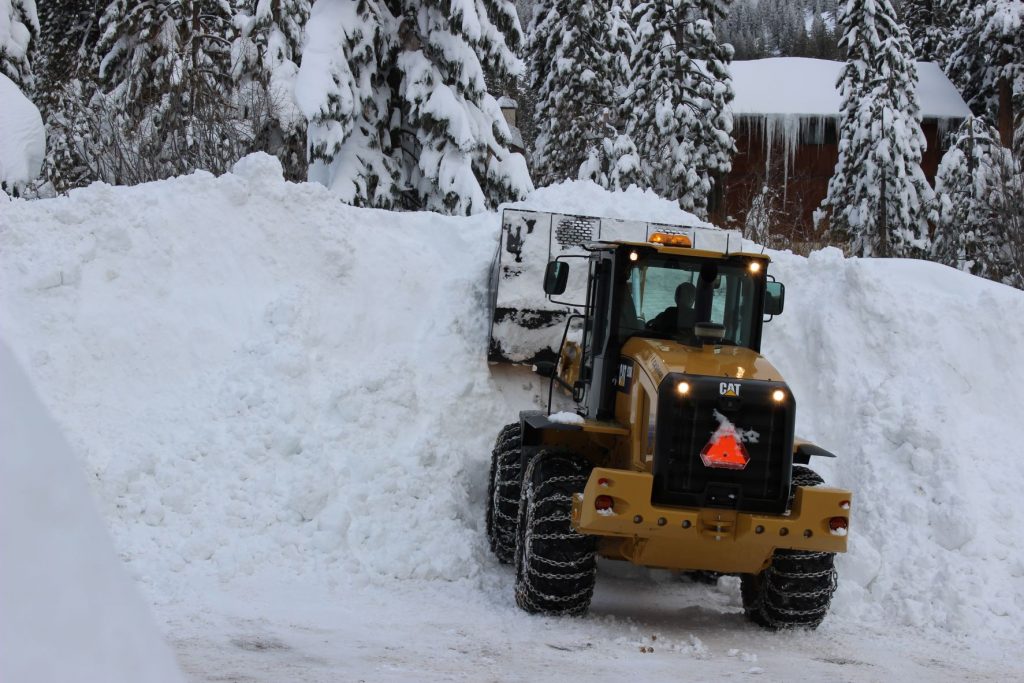
According to the records, the last time Lake Tahoe had a snowfall like this year’s was back in 1970! With this subject at hand, we are reposting a former Blog to help all of you who live in the region with this important information.
So it is no surprise that our architect firm in Truckee and Lake Tahoe is getting calls about snow removal … from the roof. Although we certainly know all about designing mountain homes that meet the structural requirements for significant snowfall like we are experiencing today, when it comes to the question of how to remove snow from the rooftops, we refer our clients to professionals who know how to safely get the job done.
To help you start your own research on the subject, we found an excellent article posted on State Farm Insurance’s website.
Here are the highlights of the story posed by the question “How do you know if you have too much snow on the roof?”
One cubic foot of fluffy, dry snow weighs about three pounds. The same amount of dense, wet snow can weigh as much as 21 pounds. While most roofs are built to withstand more than that, your roof may be under too much pressure if you see these signs:
- Visible sagging along the roofline
- Cracks in the ceiling or on the walls
- Popping or creaking noises
- Difficult-to-open doors and windows
As it melts excess snow can also lead to ice dams — melting snow refreezes and can damage your home’s interior under the eave line.
How to safely clear your roof
Keep the following in mind:
- Hire a professional. A person who does this work regularly should know the best techniques and likely be insured.
- Never work alone. Always have someone with you in case you slip or have an emergency.
- Clear the area. The ladder up to your roof should be positioned on solid ground. Also, make sure the rungs are clear of ice and snow before you climb.
- Secure yourself. If possible, use a strap or belt to anchor yourself to something strong, like a chimney.
- Avoid shingle damage. Stay away from picks, hammers, or other sharp tools to clear snow and ice.
- Use the right tools. If you have a one-story or flat-roofed house, invest in a snow rake. These long-handled tools with plastic blades can help you gently pull snow from the edge of the roof line.
Inasmuch as this is a good recap of how to get the job done, our team at Borelli Architecture suggests you seek professionals to get the job done. Roofing companies and possibly professional tree removal companies would be a good place to start. Here’s a link to the Better Business Bureau’s recommendations.
In the meantime, if you want more details about how to build a structurally sound home in the mountains, feel free to reach out at any time.
 James P. Borelli
James P. Borelli
Founder/Principal
Borelli Architecture
Lake Tahoe / Truckee
jim@borelliarchitecture.com
775.831.3060



